- Category
- War in Ukraine
Military Vehicles Advancing Troop Mobility on Ukraine’s Frontlines
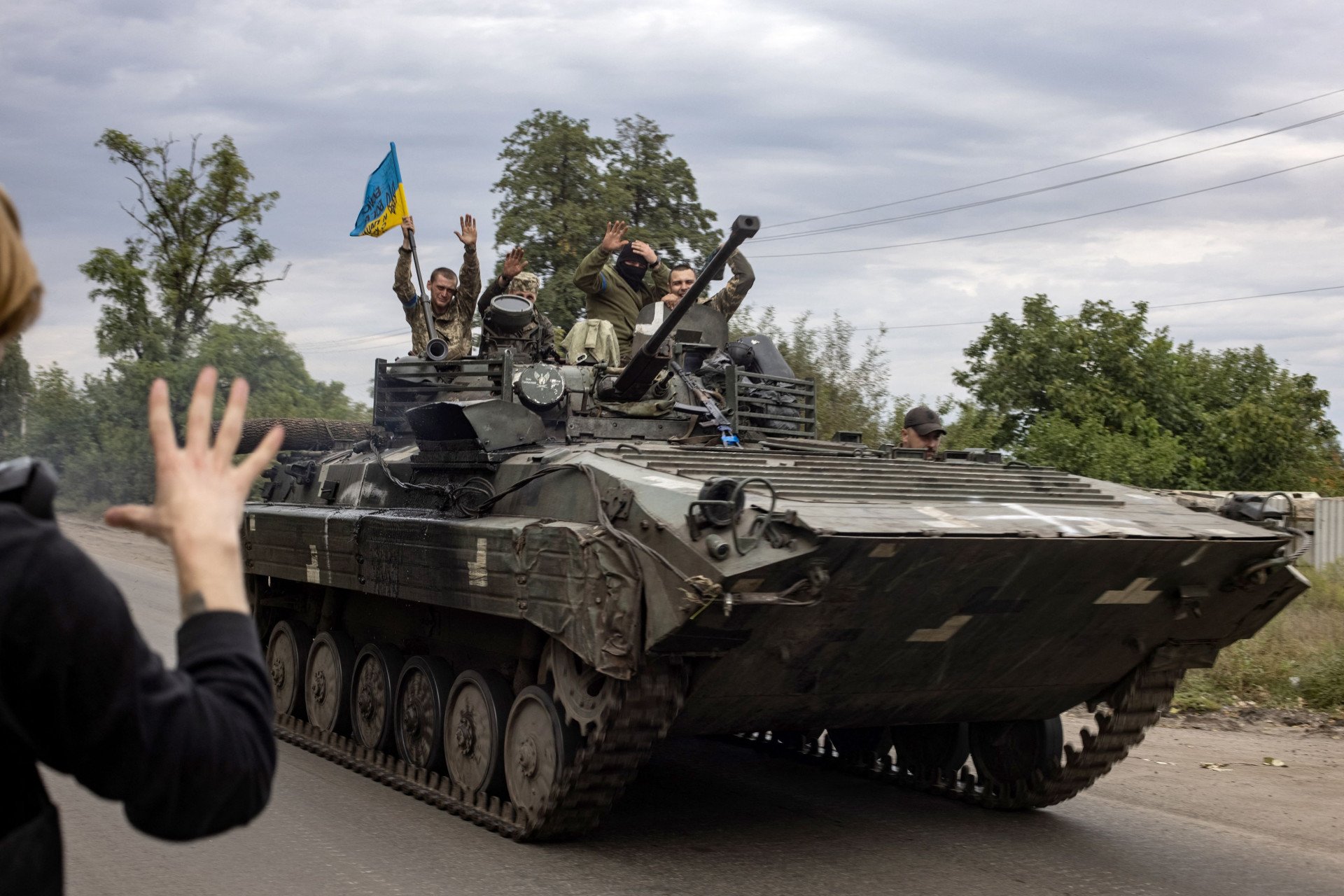
Troop mobility has become just as vital as firepower against Ukraine’s fight against Russian invasion. With over 110 types of military vehicles in action—60 added in 2024 alone—here’s a deeper look at some of the Ukraine troop carriers used on the frontlines in Ukraine today.
The extensive list of modern military vehicles used in Russia’s war against Ukraine includes armored cars, SUVs, trucks, motorcycles, and special vehicles, produced and delivered by more than 20 countries such as the USA, Germany, Sweden, the UK, Italy, and more.
Military vehicles are mostly made up of these main categories; tanks, armored personnel carriers (APCs), infantry fighting vehicles (IFVs), self-propelled artillery, towed artillery, rocket systems, and armored trucks.
IFVs and APCs have been key to Ukraine’s frontlines as troop mobility becomes a huge factor influencing the ever-changing battlefield. It’s been argued that regardless of how many tanks arrive in Ukraine, without the support of APCs and IFVs, Ukraine would have little success in its counteroffensive this year.
What are armored personnel carriers (APCs)?
Armored personnel carriers are mainly for the transport of troops and equipment through combat zones, like an armored taxi. Some APCs can travel through water and land moving on tracks or tires. APCs first appeared in large numbers during World War 2. The German army adopted the APCs to carry their military who worked the Panzer tank, into combat. Post-war, the U.S. developed the full-tracked carrier with all-round armor protection. Since then, many variants of APCs have been produced.
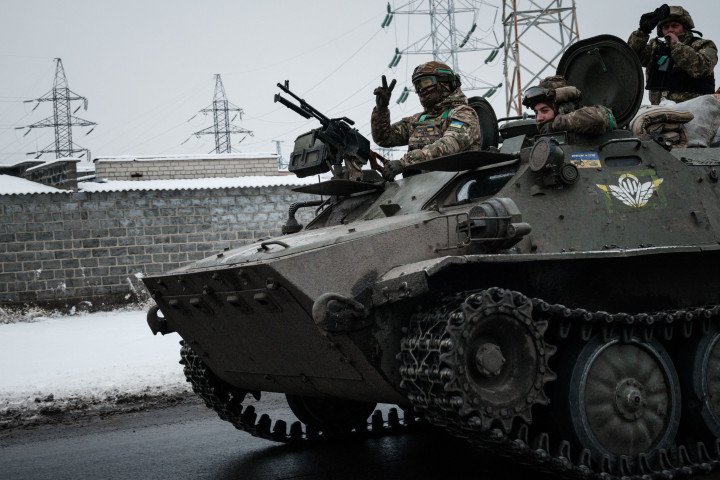
What armored personnel carriers are used in Ukraine?
MT-LB Multipurpose Armoured Vehicle (1960)
The MT-LB was first introduced to Ukraine during the Soviet Union. The MT-LB is armed with a 7.62mm machine gun and is currently used by both Russia and Ukraine. It was upgraded in 1995 and now has 80 variants used worldwide.
During the battle of Vovchansk, 17 MT-LB, and three tanks, carrying no less than 100 Russian infantrymen were blasted by the Ukrainian army’s 57th Motorized Brigade. Russian forces were riding on top of the MT-LB, as the weak underside of the vehicle is notoriously prone to burn when hitting a mine. Ukrainian forces however attacked from above using drones, and all the Russian soldiers were wiped out.
BTR-80 (1986)
The English translation of BTR is literally “armoured transporter”. The BTR-80 is armed with a heavy machine gun, its latest model the BTR-80a was upgraded with a 30mm Canon. Russia and Ukraine both use the Soviet BTR-80.
BTR-90 (2007)
The BTR-90 is used by Russia only. It’s armed with a 30mm gun and an anti-tank guided missile launcher.
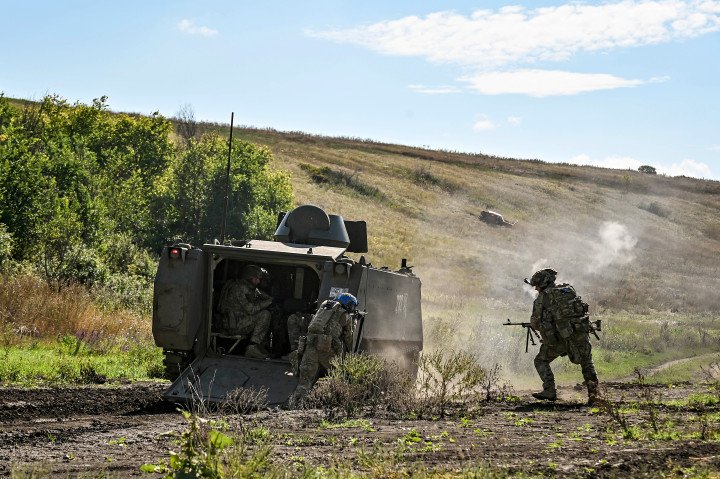
M113 (1960)
The U.S. produced more than 80,000 M113s, and for a long time it was the main armored personnel carrier of the American army. The typical M113 carries a crew of 2, and a squad of 11 soldiers along with serving as a base for several dozen specialized vehicles. The M113 can move at speeds of up to 65km per hour.
Since 2022, Ukraine has been supplied with hundreds of M113 variants from various countries with a variety of modifications. The U.S. alone has provided Ukraine with more than 900 M113s.Ukraine has received the APC variants plus ambulance and medical versions. During the Battle of Bakhmut and Soledar, the M113 was seen to be highly effective in evacuating Ukrainian troops under continuous shelling from Russian forces.
The evacuation of wounded Ukrainian soldiers under the incessant shelling of the Russians with the help of M113 in Soledar. A low bias to such military doctors who, in spite of everything, save lives 🙏 #UkraineRussiaWar️ #War #Ukraine #Україна #ЗСУ #Соледар pic.twitter.com/lW56PdZ7N2
— AlexRaptor (@AlexRaptor94) January 11, 2023
Mine Resistant Ambush Protected (2007)
The MRAP APC was first developed in 2007 as a response to the increased threat of IEDs during the Iraq War.
The MRAPs are particularly popular in Ukraine as the frontline is one of the most mined in the world and its thicky armored hull and v-shape bottom makes it more survivable than a typical infantry fighting vehicle (IFV).
The MRAP has less firepower and cross-country mobility than most IFVs but protection is recently a commonly preferred feature. Ukraine has received several variants of the MRAP from a variety of countries.
The Canadian-made Roshel Senator MRAP variant was initially developed to be used by the police but has since received modifications to suit the needs of the Ukrainian army. This variant absorbs energy from mines or other explosive device blast effects equivalent to 6kg of TNT, preserving the crew inside. Canada has donated around 400 over several packages since 2022.
The U.S. has donated 1,000 MRAPs of different variants to Ukraine. One variant is the Cougar which houses 2 crew, and 4 military men, travelling at a top speed of 104km per hour with a range of 675km before refuelling.
Albania donated 22 of its American-made MaxxPro MRAPs. The MaxxPro can carry up to 8 personnel and can protect its crew from 7 kilograms of TNT. Its bulletproof glass weighs 120kg and has stopped shelling from heavy machine guns. It’s been celebrated for its survivability, however is known to capsize when taking corners at high speeds.
#Ukraine: Just a few International M1224 MaxxPro MRAP, donated by the United States, on the move somewhere in UA.
— 🇺🇦 Ukraine Weapons Tracker (@UAWeapons) August 14, 2022
Along with the Australian Bushmaster, UK-supplied Wolfhound and Mastiff, as well as BMC Kirpi from Turkey, the quantity of MRAP-classifed vehicles is increasing. pic.twitter.com/5saCnC2Zzw
What are infantry fighting vehicles (IFVs)?
Similar to APCs, IFVs have metal tracks or tires and are also amphibious. IFVs are also designed to carry troops but can provide the military with direct-fire support. They are more heavily armed than APCs, with larger guns, and are protected with thicker armor.
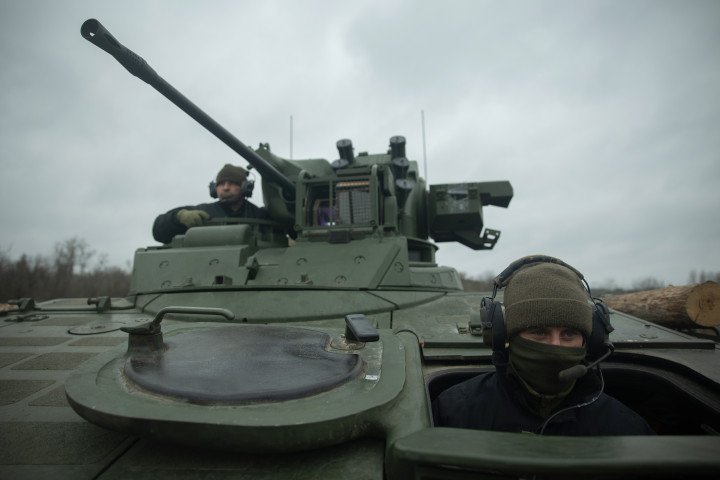
What infantry fighting vehicles are used in Ukraine?
BMP-1 (1966)
The Soviet abbreviation of BMP also means “infantry fighting vehicle.” Both Russia and Ukraine are using the Soviet BMP-1. After entering the Soviet Army in 1966, more than 40,000 were produced, becoming one of the most common IFVs in the world at the time.
The BMP-1 has inadequate protection, its 73mm gun has minimal recoil but loses its accuracy past a few hundred meters. Both Russia and Ukraine have made upgrades to the BMP-1, such as 23mm or 30mm cannons allowing them to engage on targets thousands of metres away.
A new modification of the Ukrainian BMP-1 with an new combat module.https://t.co/l7p7140Utf pic.twitter.com/kquey7cBob
— Special Kherson Cat 🐈🇺🇦 (@bayraktar_1love) November 27, 2023
BMP-2 (1980)
Like the BMP-1, the BMP-2 also has inadequate protection and can only withstand small arms fire and shell fragments. It’s designed to carry 3 crew members and 7 soldiers and travels at a maximum road speed of 65 km/h with a range of 550 to 600 km before needing to refuel.
BMP-3 (1987)
The BMP-3 is the successor to the BMP-1 and the BMP-2. The BMP-3 is used by Russian forces, however, some have been put into service by the Ukrainian Armed Forces after being captured.
It’s equipped with multiple weapons such as the 100mm 2A70 semi-automatic rifled gun/missile launcher, capable of firing both conventional rounds and guided missiles. It can engage a variety of targets, such as tanks, and slow-moving aerial targets like helicopters.
Russia has recently been using it in an unusual role; for in-direct fire, even though its firing range is limited to roughly 4km. Russian armed forces had only 600 armored vehicles of this type before Russia’s full-scale invasion of Ukraine, making their stockpile fairly scarce in 2024, media outlet Defense Express reported.
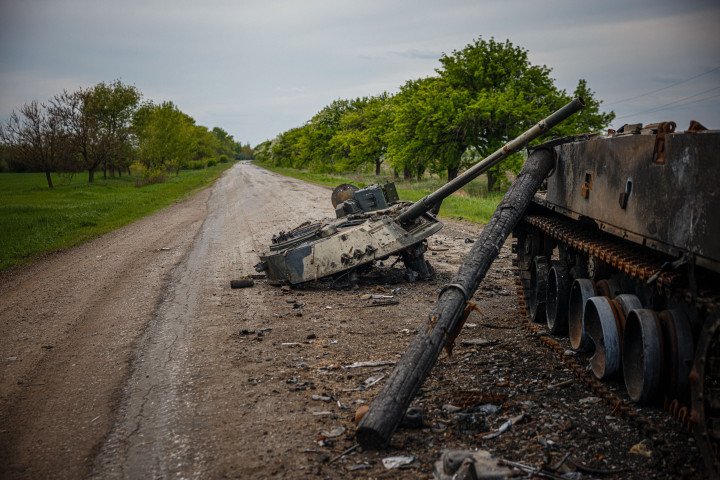
In April 2024, the BMP-3 was introduced with the “Cactus” protection kit which is reactive armor that’s quick-detachable and can be replaced in the battlefield. The turret is fitted with rubber shields and grills around the engine. This should in theory provide the BMP-3 with advanced protection.
However, even with its latest protection upgrade, Ukrainian forces have been seen to eliminate the BMP-3.
The second visually confirmed loss of the Russian BMP-3 fitted with Kaktus ERA. Mariinka front, Donetsk region. https://t.co/yRspp3YVKY https://t.co/FjbGEYErPR pic.twitter.com/jUGDf3dXDz
— Special Kherson Cat 🐈🇺🇦 (@bayraktar_1love) July 27, 2024
M2 Bradley fighting vehicle (1981)
The M2 Bradley infantry fighting vehicle is primarily designed to transport infantry across the battlefield and was largely produced in response to the Soviet BMPs. The U.S.-produced vehicle, upon entering service, replaced the M113 as it is faster, and more powerful and its better suspension makes it more suitable off-road. Since its initial production, it’s had several improvements.
There are several versions of the Bradley, the M2 is designed to carry more troops whereas the M3 is designed to carry more ammunition.
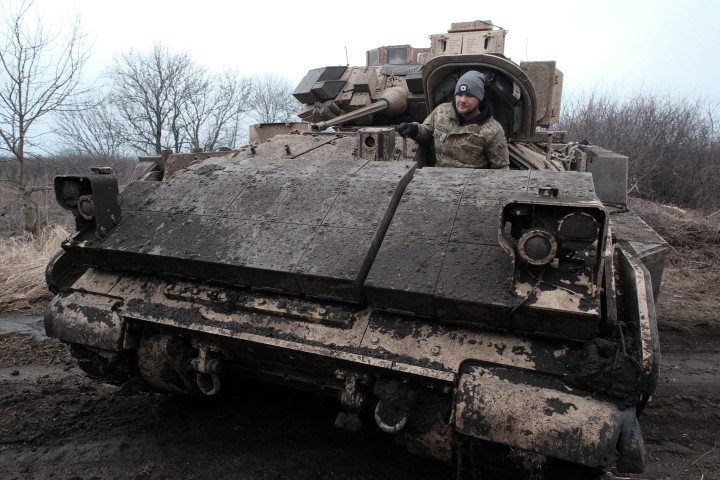
The M2 can travel around 500km on a single tank of fuel and its armor makes it difficult for Russian tanks to penetrate.
The U.S. has donated 300 M2 Bradley’s to Ukraine and it has gained legendary status among both Ukrainian and Russian troops, who are eager to capture them from Ukrainian forces.
The Bradley has been seen to drive over landmines unscathed and even take on Russia’s T-90M, survived an attack from Russia’s T-72, and suffered minimal damage after being hit twice by anti-tank guided missiles.
Ukrainian soldier says Bradley saved his life, 3 times. pic.twitter.com/RhCTyPAMl3
— UNITED24 Media (@United24media) July 20, 2024
Marder 1A3 (1960s)
The German armored vehicle, the Marder 1 was designed to carry infantrymen alongside the Leopard 1 tank during the Cold War. Germany’s weapons manufacturer Rheinmetal has delivered more than 200 combat vehicles and a large proportion of these are the Marder 1A3.
Over the years the Marder has been modernised many times. The variant delivered to Ukraine is equipped with additional laser rangefinders for efficient and precise target engagement and better armor.
Despite its age, it remains highly efficient due to its upgrades. It can carry a crew of 3 and 10 soldiers reaching speeds of 75km per hour. It’s armed with a 20mm automatic cannon and an MG3 7.62mm machine gun. This variant is argued to be one of Ukraine’s best-protected IVFs.
The Marder is currently working in the ongoing Ukrainian incursion in Russia’s Kursk region. They are valued highly by Ukrainian forces as they can withstand far more than the post-Soviet BMPs.
“Marder is an excellent example of German quality,” Ukrainian defense minister Oleksii Reznikov said.
Marder is an excellent example of German quality. I've tried it myself.
— Oleksii Reznikov (@oleksiireznikov) March 29, 2023
Look forward to taming Leopards soon. I love the way they roar!
Would be happy if @AnkaFeldhusen can join me. Let’s do it together!
Thank you to @Bundeskanzler, Boris Pistorius & the 🇩🇪 people! 🇺🇦🤝🇩🇪 pic.twitter.com/uTE8hwewpV
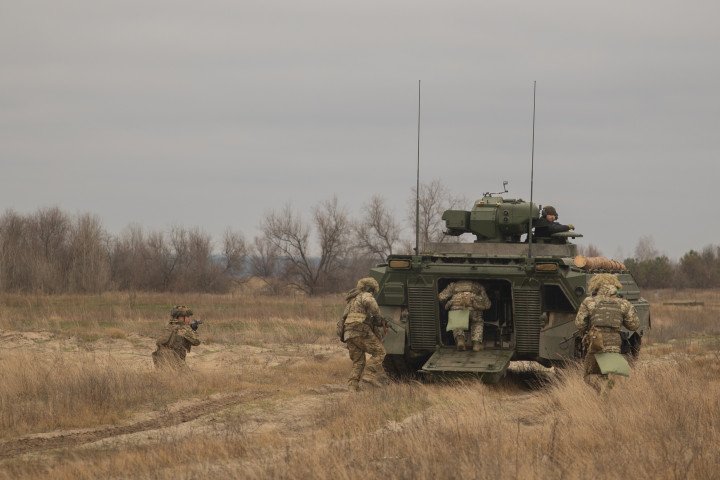
-46f6afa2f66d31ff3df8ea1a8f5524ec.jpg)
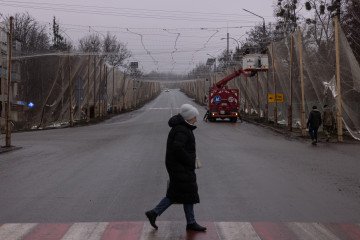
-f88628fa403b11af0b72ec7b062ce954.jpeg)
-b63fc610dd4af1b737643522d6baf184.jpg)

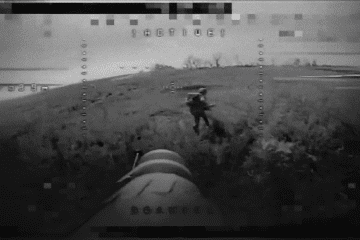
-29a1a43aba23f9bb779a1ac8b98d2121.jpeg)
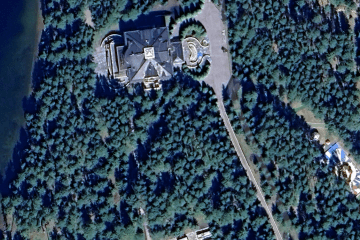
-24deccd511006ba79cfc4d798c6c2ef5.jpeg)